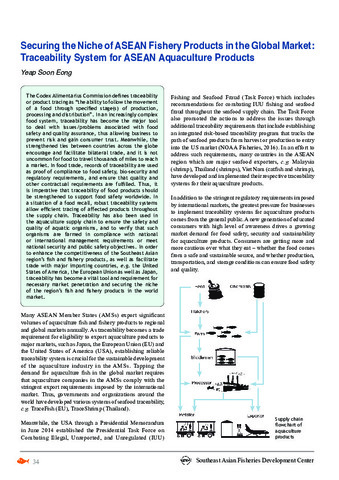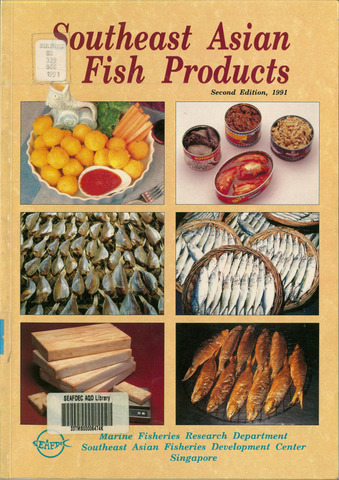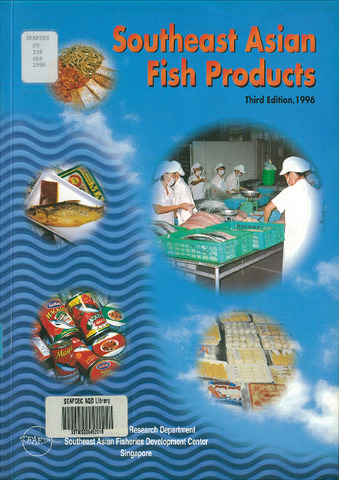Securing the niche of ASEAN fishery products in the global market: Traceability system for ASEAN aquaculture products
Share
Abstract
The Codex Alimentarius Commission defines traceability or product tracing as 'the ability to follow the movement of a food through specified stage(s) of production, processing and distribution'. In an increasingly complex food system, traceability has become the major tool to deal with issues/problems associated with food safety and quality assurance, thus allowing business to prevent risk and gain consumer trust. Meanwhile, the strengthened ties between countries across the globe encourage and facilitate bilateral trade, and it is not uncommon for food to travel thousands of miles to reach a market. In food trade, records of traceability are used as proof of compliance to food safety, bio-security and regulatory requirements, and ensure that quality and other contractual requirements are fulfilled. Thus, it is imperative that traceability of food products should be strengthened to support food safety worldwide. In a situation of a food recall, robust traceability systems allow efficient tracing of affected products throughout the supply chain. Traceability has also been used in the aquaculture supply chain to ensure the safety and quality of aquatic organisms, and to verify that such organisms are farmed in compliance with national or international management requirements or meet national security and public safety objectives. In order to enhance the competitiveness of the Southeast Asian region's fish and fishery products, as well as facilitate trade with major importing countries, e.g. the United States of America, the European Union as well as Japan, traceability has become a vital tool and requirement for necessary market penetration and securing the niche of the region's fish and fishery products in the world market.
Suggested Citation
Yeap, S. E. (2016). Securing the niche of ASEAN fishery products in the global market: Traceability system for ASEAN aquaculture products. Fish for the People , 14(2), 34-40. http://hdl.handle.net/20.500.12066/992
Subject
FAO Code of Conduct for Responsible Fisheries; safety regulations  ; trade
; trade  ; resource conservation
; resource conservation  ; overfishing
; overfishing  ; fishery regulations
; fishery regulations  ; fishery resources
; fishery resources  ; socioeconomic aspects
; socioeconomic aspects  ; fishery management
; fishery management  ; illegal fishing
; illegal fishing  ; Codex standards; fisheries
; Codex standards; fisheries  ; stocks
; stocks  ; Health and safety; fishery products
; Health and safety; fishery products  ; South East Asia
; South East Asia
 ; trade
; trade  ; resource conservation
; resource conservation  ; overfishing
; overfishing  ; fishery regulations
; fishery regulations  ; fishery resources
; fishery resources  ; socioeconomic aspects
; socioeconomic aspects  ; fishery management
; fishery management  ; illegal fishing
; illegal fishing  ; Codex standards; fisheries
; Codex standards; fisheries  ; stocks
; stocks  ; Health and safety; fishery products
; Health and safety; fishery products  ; South East Asia
; South East Asia
Collections
Related items
Showing items related by title, author, creator and subject.
-
Southeast Asian fish products
Ng, Mui Chng; Hooi, Kok Kuang; Miwa, Katsutoshi (Marine Fisheries Research Department, Southeast Asian Fisheries Development Center, 1991)This report is a comprehensive record of fish products in the region, and will be of interest to researchers, food scientists, fish technologists and administrators. It will also be useful for fish traders, and may be used ... -
Southeast Asian fish products
Kok, Tiong Ngei; Yeap, Soon Eong; Hariono, Ira; Theng, Chevonne Ang Guat (Marine Fisheries Research Department, Southeast Asian Fisheries Development Center, 2002)This book is based on an ASEAN wide survey of products processed and consumed in the region. The participating countries are Brunei Darussalam, Indonesia, Malaysia, Philippines, Singapore, Thailand and Vietnam. Results ... -
Southeast Asian fish products
Ng, Mui Chng; Chia, Evelyn Geok Hoon; Lee, How Kwang (Marine Fisheries Research Department, Southeast Asian Fisheries Development Center, 1996)This book is based on an ASEAN wide survey of products processed and consumed in the region. The participating countries are Brunei Darussalam, Indonesia, Malaysia, Philippines, Singapore, Thailand and Vietnam. Results ...




